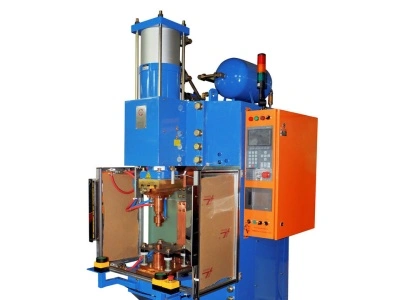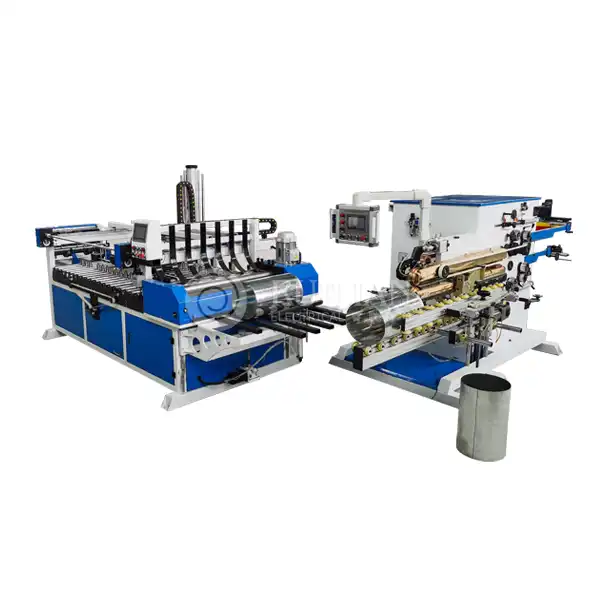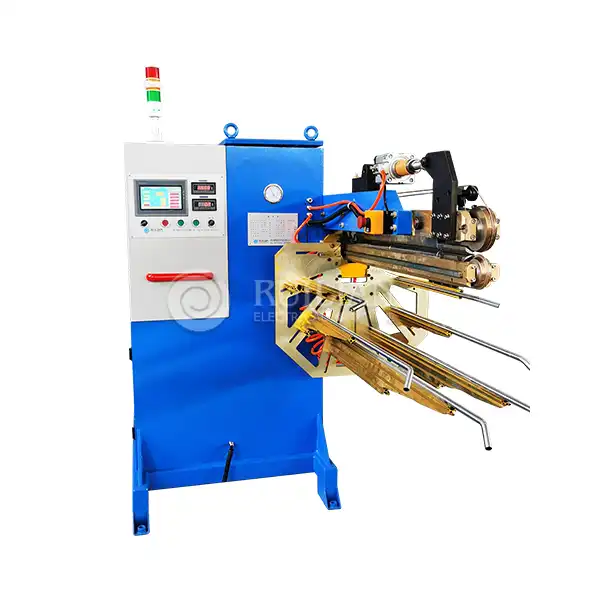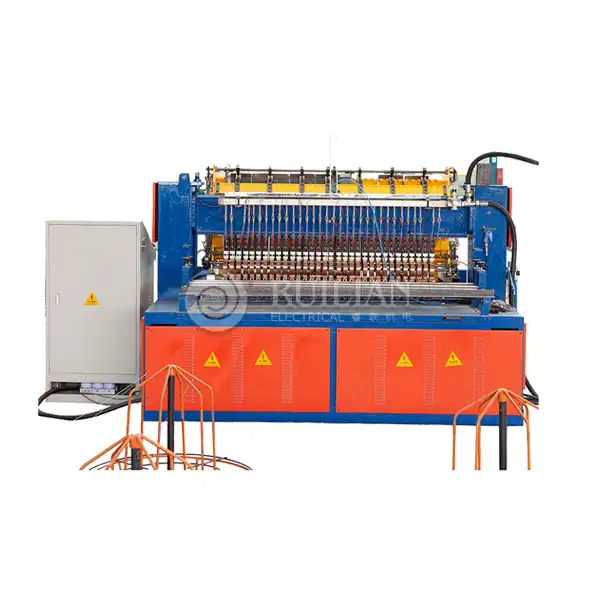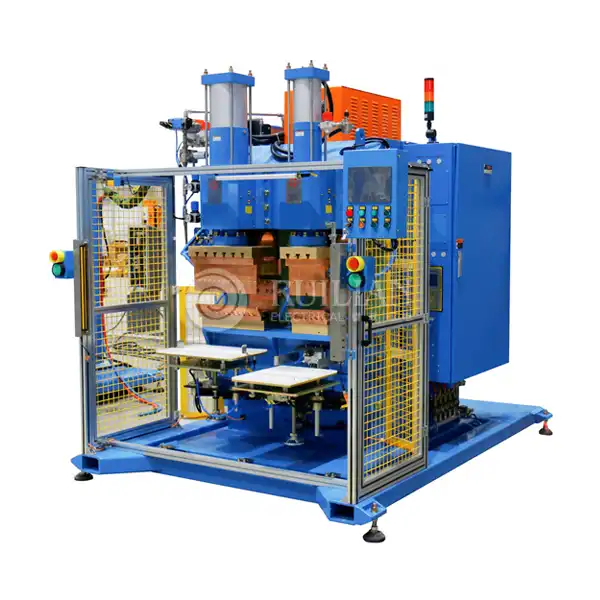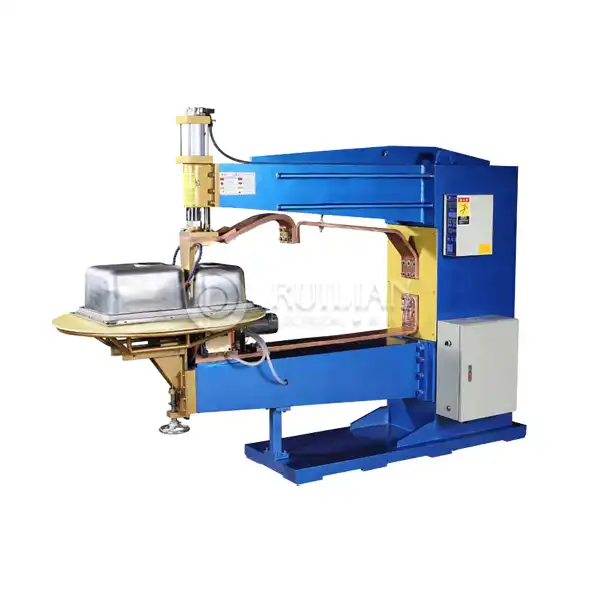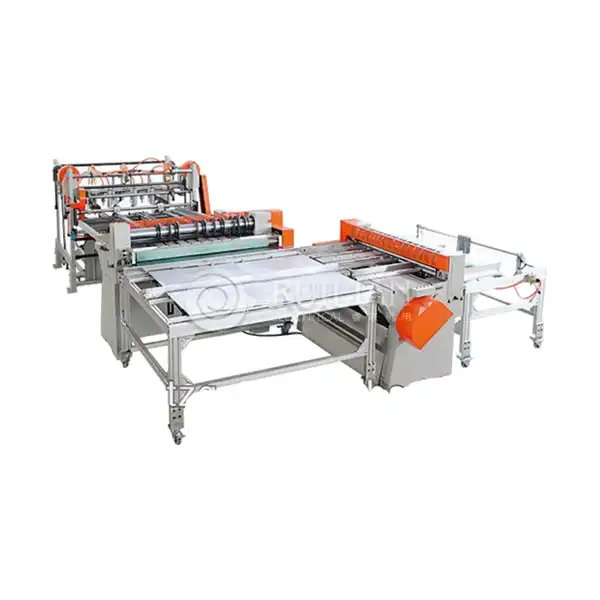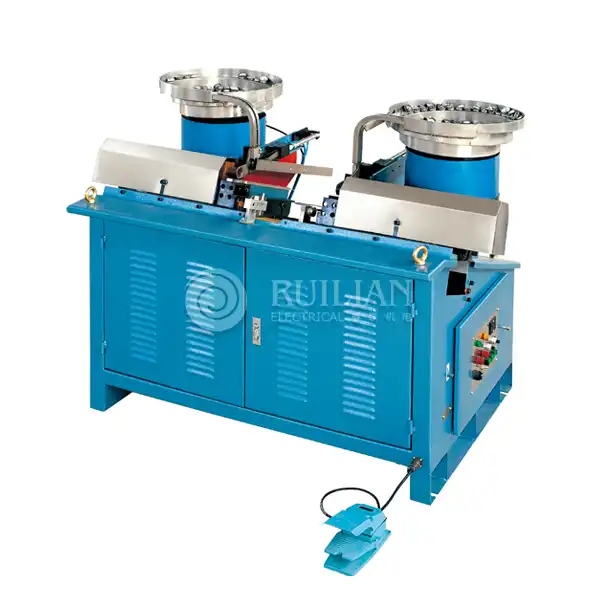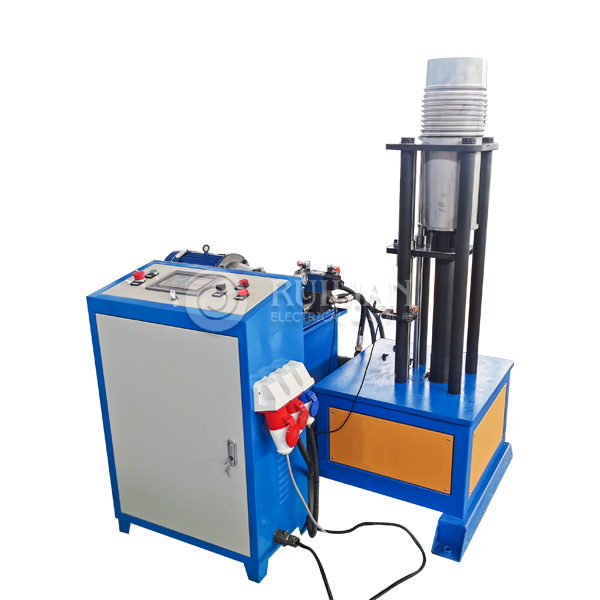The Fundamental Principles of AC Spot Welding
AC Spot Welding Machines operate on a straightforward yet ingenious principle. The process begins with two or more metal sheets placed between two electrodes. These electrodes, typically made of copper alloys, serve a dual purpose: they conduct electricity and apply pressure to the workpieces.
The magic happens when a high-current, low-voltage electric current is passed through the electrodes. This current, alternating at 50 or 60 Hz, creates resistance at the point of contact between the metal sheets. The resistance generates heat, which rapidly raises the temperature of the metal at this localized spot.
As the temperature rises, it reaches the melting point of the metal. Under the pressure applied by the electrodes, the molten metal from both sheets intermingles. When the current is switched off, this molten pool quickly solidifies, creating a strong, permanent bond known as a weld nugget.
The entire process occurs in a matter of milliseconds, making AC Spot Welding Machines incredibly efficient for high-volume production. The speed and precision of this method contribute to its widespread adoption in industries where consistency and reliability are paramount.
Key Components and Their Roles in AC Spot Welding Machines
Understanding the components of an AC Spot Welding Machine is crucial to grasping its operation. Let's examine the key parts that work in harmony to create perfect welds:
Transformer: The heart of the AC Spot Welding Machine is its transformer. This component steps down the input voltage while dramatically increasing the current. The high current is essential for generating the heat necessary for welding.
Electrodes: These copper alloy tips are where the welding action occurs. They conduct the electric current and apply pressure to the workpieces. The shape and material of the electrodes can be customized for different welding applications.
Pneumatic System: This system controls the movement of the electrodes, applying and releasing pressure at precise moments. It ensures consistent force throughout the welding process, contributing to weld quality.
Control Panel: Modern AC Spot Welding Machines feature sophisticated control panels. These allow operators to adjust parameters such as weld time, current intensity, and electrode force, ensuring optimal results for different materials and thicknesses.
Cooling System: Given the intense heat generated during welding, a cooling system is crucial. It prevents overheating of the electrodes and other components, maintaining efficiency and prolonging the machine's lifespan.
Timer: Precision timing is critical in spot welding. The timer controls the duration of current flow, ensuring consistent weld quality across numerous repetitions.
These components work in concert, orchestrated by the machine's control system, to produce reliable, high-quality welds. The synergy between these parts is what makes AC Spot Welding Machines so effective and widely used in industrial applications.
Advantages and Applications of AC Spot Welding Machines
AC Spot Welding Machines offer numerous advantages that have cemented their place in modern manufacturing:
Speed and Efficiency: The rapid welding cycle of AC Spot Welding Machines makes them ideal for high-volume production. They can produce hundreds of welds per minute, significantly boosting productivity.
Consistency: Once properly set up, these machines can produce uniform welds with remarkable consistency. This reliability is crucial in industries where weld quality directly impacts product safety and performance.
Cost-Effectiveness: Despite the initial investment, AC Spot Welding Machines prove cost-effective in the long run. They require minimal consumables and can operate for extended periods with low maintenance needs.
Versatility: These machines can weld a variety of metals and alloys, including steel, aluminum, and titanium. They're capable of joining materials of different thicknesses, expanding their utility across diverse applications.
Clean Welds: Spot welding produces clean, neat welds without the need for filler materials. This results in a smoother finish and reduces post-weld cleaning requirements.
Given these advantages, AC Spot Welding Machines find applications in numerous industries:
Automotive Manufacturing: Car bodies, door panels, and other sheet metal components are commonly joined using spot welding.
Aerospace: The precision and strength of spot welds make them suitable for aircraft components and structures.
Appliance Manufacturing: From refrigerators to washing machines, spot welding is used extensively in assembling household appliances.
Electronics: Smaller spot welding machines are used for joining components in electronic devices and circuit boards.
Construction: Metal building components, HVAC systems, and other structural elements often utilize spot welding in their fabrication.
The versatility and efficiency of AC Spot Welding Machines continue to drive innovation in manufacturing processes across these industries and beyond.
In conclusion, the operating principle of AC Spot Welding Machines is a testament to the ingenuity of modern engineering. By harnessing the power of electricity and the properties of metals, these machines create strong, reliable bonds with speed and precision. As technology advances, we can expect further refinements in spot welding techniques, potentially opening up new applications and improving efficiency even further.
For those seeking to leverage the power of AC Spot Welding Machines and ac welding machines in their operations, RUILIAN offers cutting-edge solutions tailored to various industrial needs. Our extensive range of welding equipment and expertise in application solutions can help optimize your manufacturing processes. To explore how our AC Spot Welding Machines can benefit your business, visit our website at www.rlseamwelding.com or reach out to us directly at ry@china-ruilian.cn. Let's work together to elevate your welding capabilities and drive your production to new heights.


